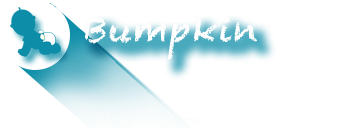Sometimes when my baby signs for more food, or that he’s had enough to eat already, on-lookers come over to the table to tell me how smart my baby must be. Actually, it allows us to be lazy.
My recommendation is to start with three basic baby sign language hand gestures and expand from there. Start with “hungry” and “more” and “done.” Next, it makes sense to teach your baby the baby sign language for “mommy” and “daddy.”
If we hadn’t learned to communicate in baby sign language, we’d still be trying to interpret cries, slapping the table and other improvised gestures. Baby sign language does not require an especially intelligent or advanced baby; on the contrary, it has everything to do with a few short drills that most babies pick up almost immediately. The real work comes when reinforcing the gestures.
Babies develop conversational speech after they’ve already learned the other basic life skills, with the exception of potty training. From an early age – around six months – babies are ready to communicate with parents about what they feel. That means that there’s a window of time when your baby can feel trapped within his own skin, not being able to express needs and emotions except through a made-up system between parent and baby. Those slaps, claps and cries are your baby’s attempts to communicate, after all. Crying is something parents learn to decipher, with slaps and squeals sometimes correlating levels of stress.
Children are more than ready to start communicating with their parents at an extremely early age. One useful website is babysignandplay.com, where an online tutorial walks parents through the basic gestures.
 But baby sign language doesn’t end when they’re infants. Throughout their lives, signing offers a means for communicating when words don’t always suffice. In fact, we’re probably already using a variety of hand gestures with kids already, only they’re not standardized and probably not used routinely enough for your children to remember. Parents who have had kids use signing as a means for communicating claim their kids go on to live lives that are more fulfilling:
But baby sign language doesn’t end when they’re infants. Throughout their lives, signing offers a means for communicating when words don’t always suffice. In fact, we’re probably already using a variety of hand gestures with kids already, only they’re not standardized and probably not used routinely enough for your children to remember. Parents who have had kids use signing as a means for communicating claim their kids go on to live lives that are more fulfilling:
- Allows for earlier communication with parents
- Gives kids self confidence
- Provides a different vocabulary for expressing common things
- Reduces crying fits by breaking through the communication barrier
- Allows parents better insight into the lives of their child
There are also a number of books available, including Baby Sign Language Basics, a how-to guide for parents looking for a structured approach to teaching their baby sign language. One particularly glowing review of the book is really a testament to teaching baby sign language in general, whether you follow a guide or not:
I cannot explain how amazing it is to be able to communicate with your child before they can form words. Even after my son began “talking,” we wouldn’t have known what he was trying to say most of the time without the signs to go along with it. Some people worry that signing can slow speech development, but if I’m not mistaken, there’s research to the contrary. In our experience, I think maybe our son was slower to begin speaking out loud, but he could still sign more words than his peers could say and in the long run I think this gave him an advantage.
But as other reviewers point out, there may not be a need for teaching kids extended vocabularly such as “alligagor”, “snake” or “rat.” Leave it to a book to gloss over the basics. They’ve got to fill all those pages with something, after all.

